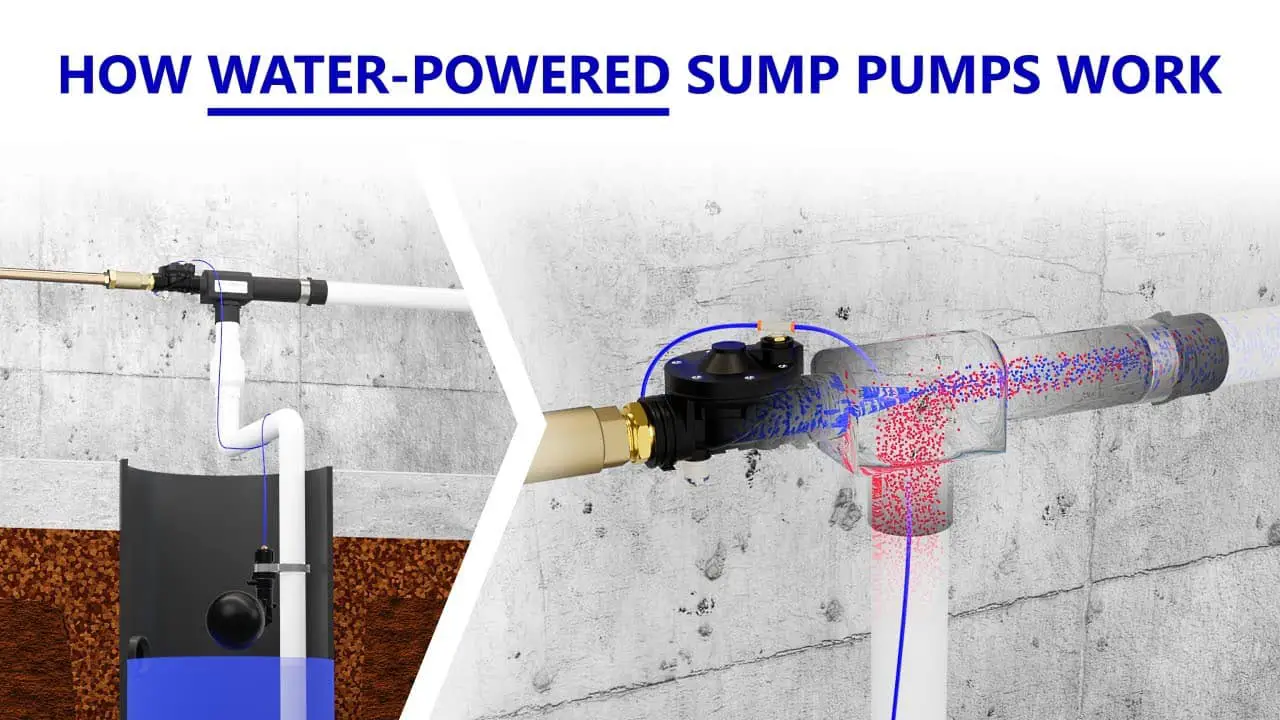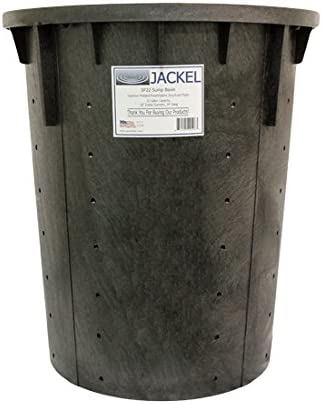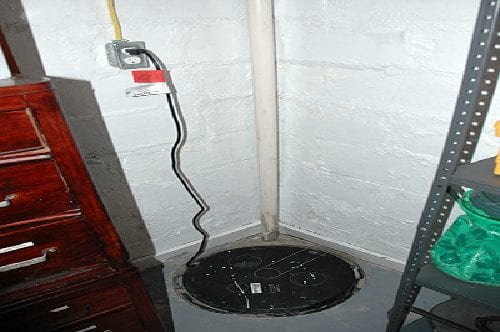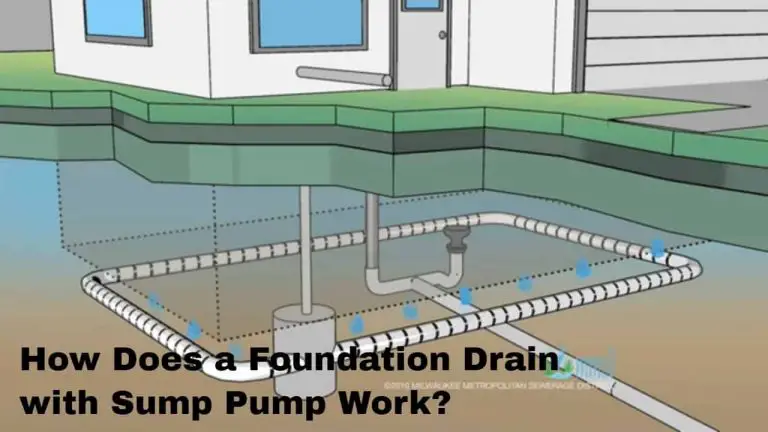How Do Backup Sump Pumps Work
A sump pump is a device that is installed in the lowest part of a home’s foundation, or in a basement. Its purpose is to remove water that has accumulated in the sump basin and to prevent flooding.
Sump pumps are used in homes with basements, crawl spaces, and slab foundations. They are also used in commercial buildings, such as office buildings and retail stores.
There are two types of sump pumps: submersible and pedestal. Submersible sump pumps are designed to be placed underwater in the sump basin.
The pedestal type is mounted on a pedestal above the basin. Both types of pumps have an impeller that helps to move water out of the basement or crawl space and into a drain pipe.
If you live in an area that’s prone to flooding, you know how important it is to have a good sump pump. But what happens if your primary sump pump fails? That’s where a backup sump pump comes in.
A backup sump pump is exactly what it sounds like – a secondary pump that kicks in if your primary pump fails. These pumps are usually powered by batteries, so they’ll still work even if the power goes out.
Most backup sump pumps are designed to run for several hours on a single charge, so they can keep your basement dry even during extended power outages. Some models even have built-in generators so they can recharge themselves while they’re running.
No matter which type of backup sump pump you choose, make sure it’s properly installed and maintained. That way, you’ll be prepared for anything Mother Nature throws your way.
How Do Water-Powered Sump Pumps Work?
Water-Powered Sump Pump Disadvantages
While a water-powered sump pump has several advantages, there are also some disadvantages to consider. One of the biggest drawbacks is that these pumps require a constant water supply in order to function properly.
If your municipality experiences a drought or water main break, your sump pump will not work and your basement could flood. Additionally, if you have a power outage, your backup battery will not work and you will be without sump pump protection.
Another downside to water-powered sump pumps is that they can be quite noisy. If you have ever heard one of these pumps running, you know that they can be quite loud – sometimes even louder than an electric sump pump.
This can be disruptive if you have finished your basement and are using it as extra living space or for entertaining guests. Finally, water-powered sump pumps are more expensive than their electric counterparts. While the initial investment may be higher, over time you will save money on energy costs since these pumps do not use electricity to operate.
Water Backup Sump Pump Installation
If you live in an area that is prone to flooding or has a high water table, you may want to consider installing a water backup sump pump. A water backup sump pump will provide an extra level of protection against flooding and can be a lifesaver in the event of a power outage.
There are two main types of water backup sump pumps: battery-operated and generator-powered. Battery-operated pumps are powered by batteries, which means they will only work if the power is out.
Generator-powered pumps are powered by a generator, which means they will continue to work even if the power is out. The installation process for a water backup sump pump is relatively simple.
The first step is to install the main pump unit, which is typically located in the basement near the existing sump pit. Next, you’ll need to install a check valve, which prevents backflow into the pit.
Finally, you’ll need to connect a discharge pipe from the pump unit to an exit point outside of your home. Once your water backup sump pump is installed, it’s important to test it regularly to make sure it’s working properly. It’s also important to keep your batteries fresh and your generator well-maintained so that you’re prepared in case of an emergency.
Are Water-Powered Sump Pumps Illegal
If you live in an area with a lot of rainfall, you may be considering installing a water-powered sump pump. But before you do, it’s important to check your local laws and regulations – in some areas, these pumps are actually illegal.
Water-powered sump pumps use the natural flow of water to power the pump, which can be a more energy efficient option than traditional electric models. However, there are some potential downsides to using one of these pumps.
For starters, if there is a power outage, your water-powered pump will not work. This means that if your basement starts flooding during a storm, you could be out of luck unless you have a backup generator or another way to power the pump.
Additionally, water-powered sump pumps can actually increase your water bill. That’s because they rely on municipal water sources to function, and if your municipality charges for water usage (as many do), then you’ll see that cost reflected on your bill.
In some cases, the increased cost may outweigh any potential savings from using a more energy efficient model. So before you install a water-powered sump pump in your home, be sure to check with your local authorities to see if they’re legal in your area – otherwise you could end up being fined or having to remove the pump altogether.
How Much Water Does a Water Powered Sump Pump Use?
Water powered sump pumps are a great way to keep your basement dry and free of water damage. But how much water do they use? Most water powered sump pumps use between 3 and 5 gallons of water per minute.
This may seem like a lot, but it’s actually less water than a standard garden hose uses! And, since the pump is using municipality supplied water, it’s not like you’re depleting your own personal supply. So, if you’re worried about how much water your sump pump is using, don’t be! It’s not nearly as much as you might think.
Water Commander Backup Sump Pump
If you live in an area that is prone to flooding, you know the importance of having a reliable sump pump. But what happens if your primary sump pump fails? That’s where a backup sump pump comes in.
A backup sump pump is a secondary pump that kicks in if your primary pump fails or if the power goes out. Water Commander is one brand of backup sump pumps that we carry at Sump Pumps Direct.
This particular model is designed for easy installation and features a durable cast iron construction. It also has a built-in check valve to prevent backflow and an automatic float switch to activate the pump when water levels rise.
If you’re looking for peace of mind during flooding season, a backup sump pump is a wise investment. And the Water Commander Backup Sump Pump is a great option to consider.
Water Commander Sump Pump Price
If you’re looking for a reliable and affordable sump pump, the Water Commander is a great option. This pump is designed for use in residential applications, and it’s perfect for those who want to protect their homes from flooding.
The Water Commander features a 1/3 HP motor that can move up to 4800 gallons of water per hour. It also has a float switch that automatically turns the pump on when water levels rise, and it will shut off when the water reaches a certain level. The price of the Water Commander Sump Pump is very reasonable, and it comes with a one-year warranty.
Water-Powered Sump Pump Pros And Cons
A sump pump is a device that is used to remove water that has accumulated in a water-collecting sump pit. The water is typically pumped out of the pit and away from the home or business to a location where it will not cause any damage.
Sump pumps are often used in homes with basements, as they can help to prevent flooding and water damage. There are two main types of sump pumps: submersible and pedestal.
Submersible pumps are designed to be placed inside the sump pit, while pedestal pumps are designed to sit outside of the pit. Pedestal pumps are typically more expensive than submersible pumps, but they offer some advantages, such as being easier to service and less likely to be damaged by debris in thepit.
Water-powered sump pumps are an environmentally friendly alternative to traditional electric sump pumps. They use no electricity, which means they have no impact on your carbon footprint.
Water-powered sump pumps also tend to be much quieter than electric models – something that can be important if your pump is located near living areas within your home. There are however some potential drawbacks associated with water-powered models.
One is that they require a reliable source of running water in order to function properly – something that may not be possible during power outages or other emergencies. Additionally, if there is a problem with your municipal water supply (such as a pressure drop), it could impact the performance of your pump.
Best Way to Backup Sump Pump
A sump pump is a vital component to any home with a basement. Its purpose is to remove water that has accumulated in the sump basin and prevent flooding.
Sump pumps can either be pedestal or submersible, but most homes have a submersible pump installed in their basement. Although sump pumps are designed to last for many years, it’s important to have a backup plan in case your primary pump fails.
There are several options available for backing up your sump pump, including battery backups, water-powered backups, and generators. One of the most popular methods for backing up a sump pump is to use a battery backup system.
These systems typically include a battery that will power the pump for several hours in the event of a power outage. Many battery backup systems also come with an alarm that will sound if the water level in the sUMP pit rises too high, alerting you to take action.
Water-powered backup systems are another option for those looking for an alternative to battery backups. These work by using municipal water pressure to power the sump pump in the event of a power outage.
One advantage of these systems is that they don’t require any additional electricity beyond what’s already being used by your municipality – making them very cost effective over time. However, one downside is that they may not work as well during extended power outages when municipal water pressure may be low.
Generators can also be used to back up your sUMP pUMp, although they tend to be more expensive than other options and require more maintenance. If you choose to go this route, make sure you select a generator powerful enough to run all of the appliances and electronics you need in your home during an extended power outage. You should also have a professional install it and ensure it’s properly maintained so it’s ready when you need it .
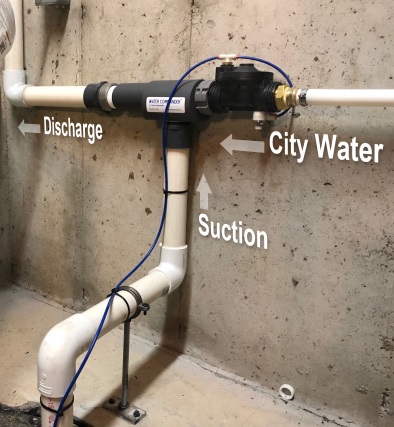
Credit: www.watercommander.com
Are Sump Pump Battery Backup Worth It?
A sump pump is a device that is used to remove water that has accumulated in a water-collecting basin, commonly found in the basement of homes. The water is typically pumped out of the home and away from the foundation to prevent flooding and damage.
A sump pump battery backup is a secondary system that kicks in when the primary sump pump fails or if there is a power outage. Sump pump battery backups are not cheap, but they can be worth the investment if you live in an area where power outages are common or if your basement frequently floods.
The battery backup will keep your sump pump running even when there is no power, ensuring that your basement stays dry. If you have ever had to deal with a flooded basement, you know how much damage water can cause and how difficult it can be to clean up. A sump pump battery backup can help prevent this type of damage by keeping your sump pump running during a power outage or other emergency.
How Long Will Sump Pump Battery Backup Last?
If you have a sump pump battery backup, you may be wondering how long the battery will last. The answer to this question depends on a few factors, including the type of battery you have and how often the sump pump is used.
The most common type of batteries used for sump pump backups are lead-acid batteries. These batteries typically have a lifespan of 3-5 years.
However, if the sump pump is used frequently, the battery may only last 1-2 years. Other types of batteries, such as lithium ion batteries, can last up to 10 years.
However, these batteries are more expensive than lead-acid batteries. To get the most out of your sump pump battery backup, it’s important to regularly test the battery and replace it when necessary. It’s also a good idea to keep a spare battery on hand so that you’re never without power in case of an emergency.
How Do I Know If My Battery Backup Sump Pump is Working?
If your home is prone to flooding or has a history of power outages, then you may be considering investing in a battery backup sump pump. But how do you know if your battery backup sump pump is working? Here are a few things to look for: 1.
Check the Battery First, you’ll want to check the battery that powers your sump pump. If it’s a lead-acid battery, then it should be kept charged between 60% and 80%.
You can use a voltmeter to test the charge of the battery. If it’s below 60%, then you’ll need to recharge it.
2. Listen for the Pump Running When the power goes out, your sump pump will automatically switch over to battery power.
You should be able to hear it running if it’s working properly. 3.
Check the Outlet Valve and Hoses Once you’ve confirmed that the pump is running on battery power, you’ll want to check the outlet valve and hoses for any leaks or blockages. The last thing you want is for your basement to flood because of a faulty sump pump!
How Much Does It Cost to Install a Water Powered Backup Sump Pump?
If you are considering installing a water powered backup sump pump, you may be wondering about the cost. Here is some information to help you make an informed decision.
The average cost to install a water powered backup sump pump is around $1,000. This price will vary depending on the size and type of pump you choose as well as the complexity of the installation.
If you have an existing sump pit, the cost may be lower. Water powered backup sump pumps are a great way to protect your home from flooding in case of a power outage.
They are also very eco-friendly since they use no electricity. The only downside is that they require a reliable source of water pressure, so if your municipality has issues with low water pressure, this may not be the best option for you.
Conclusion
A backup sump pump is a device that is used to pump water out of a basement or crawl space in the event of a power outage or if the primary sump pump fails. These pumps are typically powered by a battery, and they can be used to remove water from your home before it causes any damage.

